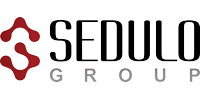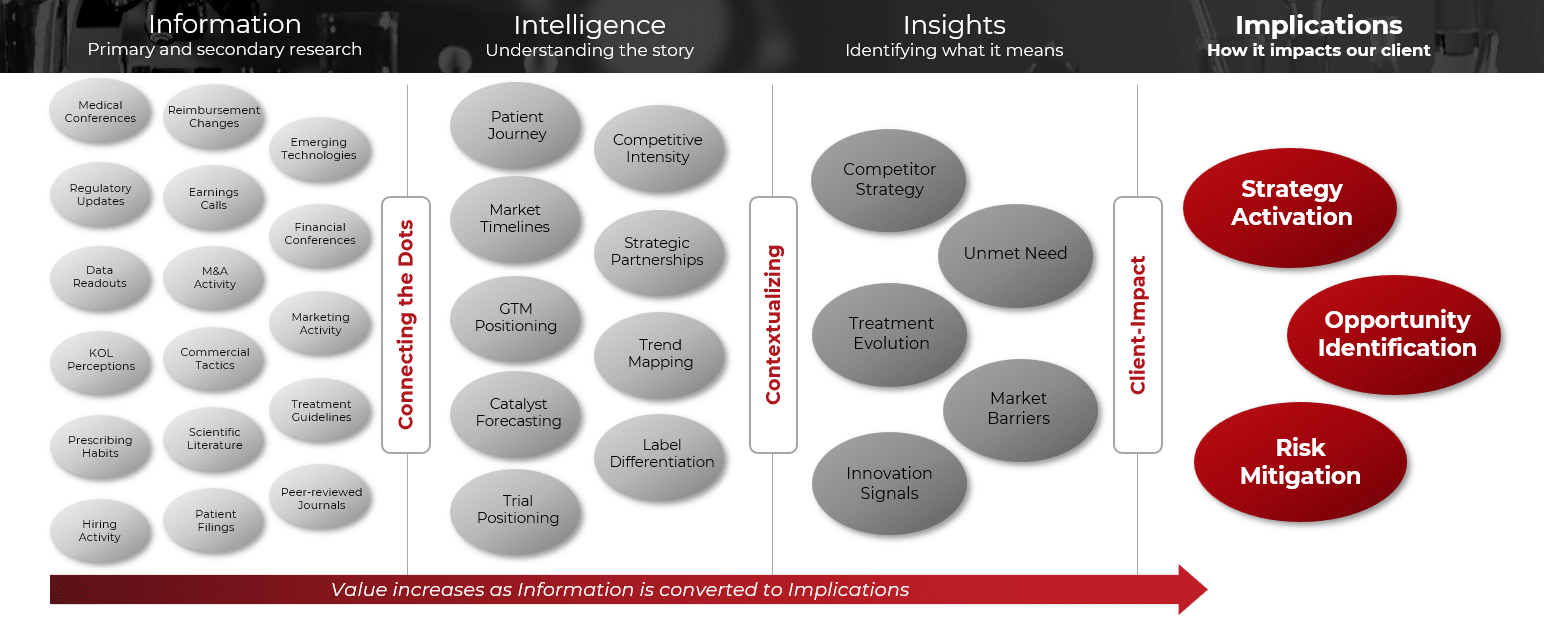The Pharma Data Dilemma
Pharma companies are drowning in data but starved for clarity. With the healthcare industry now generating nearly 30 percent of the world’s data and growing rapidly each year (RBC Capital Markets), organizations struggle to translate this flood of information into meaningful strategy. Too often, critical decisions are made without fully understanding the competitive, clinical, or regulatory landscape. In this environment, the ability to extract actionable Pharma Insights is more essential than ever.
Why Pharma Insights Matter
Data may be abundant, but insight is what drives progress in pharma. Strategic decisions, whether in clinical trial design, market entry, regulatory planning, or launch timing, require more than numbers. They demand context, interpretation, and foresight.
Translating data into insight allows organizations to identify patterns, anticipate competitor moves, understand stakeholder behavior, and align actions with evolving market realities.
Pharma Insights empower smarter decision making across functions, turning complexity into clarity and enabling strategies that are timely, targeted, and competitive.
Types of Pharma Insights
Pharma Insights span several domains, each critical to informing strategic decisions across the product lifecycle.
- Market Insights capture the broader disease and treatment landscape. This includes epidemiology, standard of care, emerging therapies, and scientific trends. It also covers Provider Insights, such as prescriber preferences, treatment behaviors, referral patterns, and barriers to adoption. These insights guide strategic planning, pipeline development, and go-to-market approaches.
- Competitor Insights reveal the activities of rival companies across R&D, regulatory filings, clinical trials, messaging, and commercialization. They help anticipate moves and shape differentiation strategies.
- Regulatory and Policy Insights track evolving approval pathways, pricing regulations, and access challenges across global markets. They inform risk assessment and submission planning.
- Commercial Insights focus on access, pricing models, payer coverage, formulary positioning, and adoption dynamics, helping define value communication and access strategy.
- Clinical Insights analyze trial design, enrollment trends, endpoints, and study results to identify benchmarks and gaps in the current landscape.
- Operational Insights include field force structure, outsourcing strategy, supply chain resilience, and vendor partnerships, supporting planning and execution.
Together, these insight categories provide a well-rounded, forward-looking view of the environment, empowering pharma and biotech companies to navigate complexity with greater clarity and confidence.
Converting Data to Insights: Sedulo’s 4i’s Process
Sedulo Group, a leading providing of pharma competitive intelligence services, developed the 4i’s framework which provides a clear, repeatable method for converting raw information into strategic direction.
The process moves through four stages: Information, Intelligence, Insights, and Implications.
Information
Information is the raw data collected from a wide range of sources across the pharmaceutical landscape. On its own, it offers limited strategic value, but it serves as the essential foundation for deeper analysis.
Common examples include regulatory updates, data readouts, earnings calls, financial and medical conferences, M&A activity, prescribing habits, commercial tactics, marketing campaigns, hiring trends, treatment guidelines, scientific literature, peer-reviewed journals, emerging technologies, patent filings, and reimbursement changes.
These data points are often disconnected and overwhelming in volume, but when organized and interpreted, they reveal powerful signals about market shifts and competitor behavior.
Intelligence
Intelligence is the process of connecting and interpreting raw data to uncover strategic meaning. It involves organizing disparate pieces of information and recognizing emerging patterns that signal shifts in the market or competitor behavior. This stage identifies where and how activity aligns with specific areas of interest, such as changes in the patient journey, acceleration in market timelines, or signs of increasing competitive intensity.
For example, tracking multiple updates related to a product’s positioning at conferences, recent hires, and trial design may indicate a shift in go-to-market strategy or label differentiation efforts. Intelligence also involves trend mapping, where clusters of activity, like digital campaigns and pricing updates, point to a coordinated push.
By moving beyond isolated data points, intelligence provides a clearer picture of where the market is heading and what competitors are likely to do next. It creates the foundation for insight, offering a strategic lens that begins to filter relevance from noise.
Insights
Insights are where meaning emerges. This stage answers the question: What does the intelligence actually mean? It connects patterns to strategic relevance, translating observed activity into directional clarity.
For example, a shift in trial design may reflect a change in competitor strategy or an effort to close an unmet need in a subpopulation. New messaging may point to treatment evolution or a repositioning effort. Trends in payer coverage, provider adoption, or pricing may expose hidden market barriers. Early-stage R&D partnerships or patent filings may signal innovation on the horizon.
Insights provide a filtered view of what matters most, turning observed data into strategic interpretation. They provide the context they need to respond with precision, focus, and foresight rather than reacting blindly to the volume of market noise.
Implications
Implications are where insight becomes action. This stage involves analyzing what the insight means specifically for your business, how it impacts your strategy, priorities, and next steps. It is not enough to know what is happening in the market; the real value lies in understanding how it affects you.
This may include identifying new opportunities, such as a gap in competitor messaging or an emerging segment with unmet need. It may also involve evaluating risks, like increased competitive pressure, shifting treatment dynamics, or access challenges that could disrupt launch plans.
Ultimately, implications support strategy activation, guiding decisions on clinical development, market positioning, resource allocation, and stakeholder engagement. This final step in the 4i’s process ensures that information leads to confident, timely action aligned with the client’s goals. It is where clarity meets execution.
Enhancing Pharma Insights with Primary Intelligence
While the 4i’s framework structures the transformation of data into strategy, its impact is amplified by integrating pharma primary intelligence.
Speaking directly with stakeholders, such as investigators, payers, competitor employees, or KOLs, adds context that cannot be found in public sources.
Primary intelligence fill critical gaps, validate assumptions, and often reveal the “why” behind the data. When layered into the 4i’s process, this intelligence deepens the accuracy and relevance of insights, ensuring implications are not only informed but grounded in real-world behaviors, perceptions, and decision drivers across the market.
Case Study: How Pharma Insights Powered a Smarter Launch Strategy
Building on this approach, Sedulo partnered with a pharmaceutical company preparing to launch a new treatment in a crowded neurology market. By combining the 4i’s framework with targeted primary intelligence, Sedulo uncovered early signals of a competitor’s shifting trial strategy and positioning. These insights enabled the client to refine messaging, adjust launch timing, and proactively engage key stakeholders, ultimately driving a more confident, competitive entry.
Key Takeaways
- Pharma companies face an overwhelming volume of data but often lack the clarity needed to make informed decisions.
- Translating data into actionable insights is essential for success across clinical, commercial, regulatory, and launch strategies.
- Effective Pharma Insights span multiple domains, from market and competitor intelligence to regulatory, clinical, and operational understanding.
- Sedulo’s 4i’s process (Information, Intelligence, Insights, Implications) offers a structured approach to transforming data into strategic value.
- Integrating primary intelligence enhances the depth, relevance, and real-world accuracy of insights.
- When applied effectively, this approach empowers pharma teams to act with confidence, speed, and competitive advantage.
Want to learn how Sedulo can support your team?
Contact us to start the conversation.


